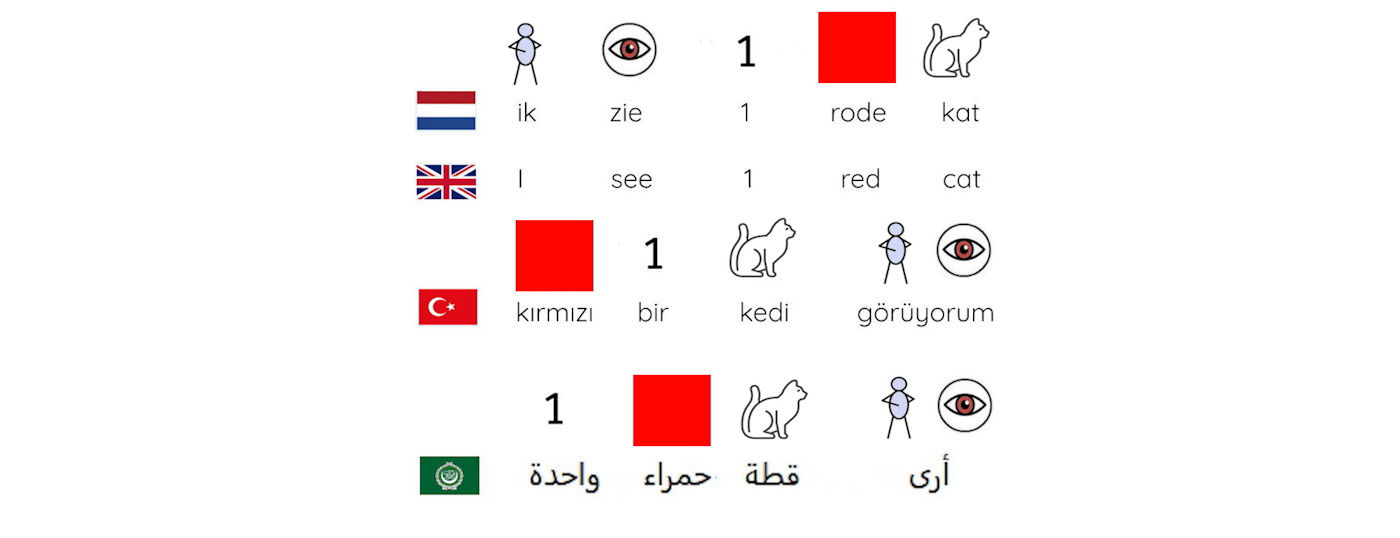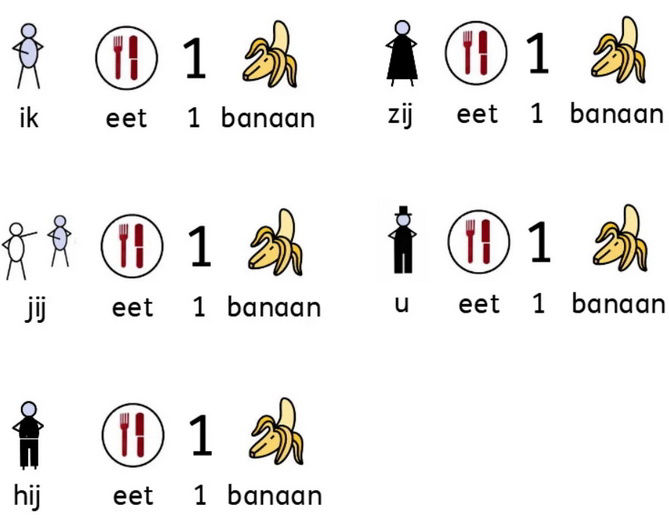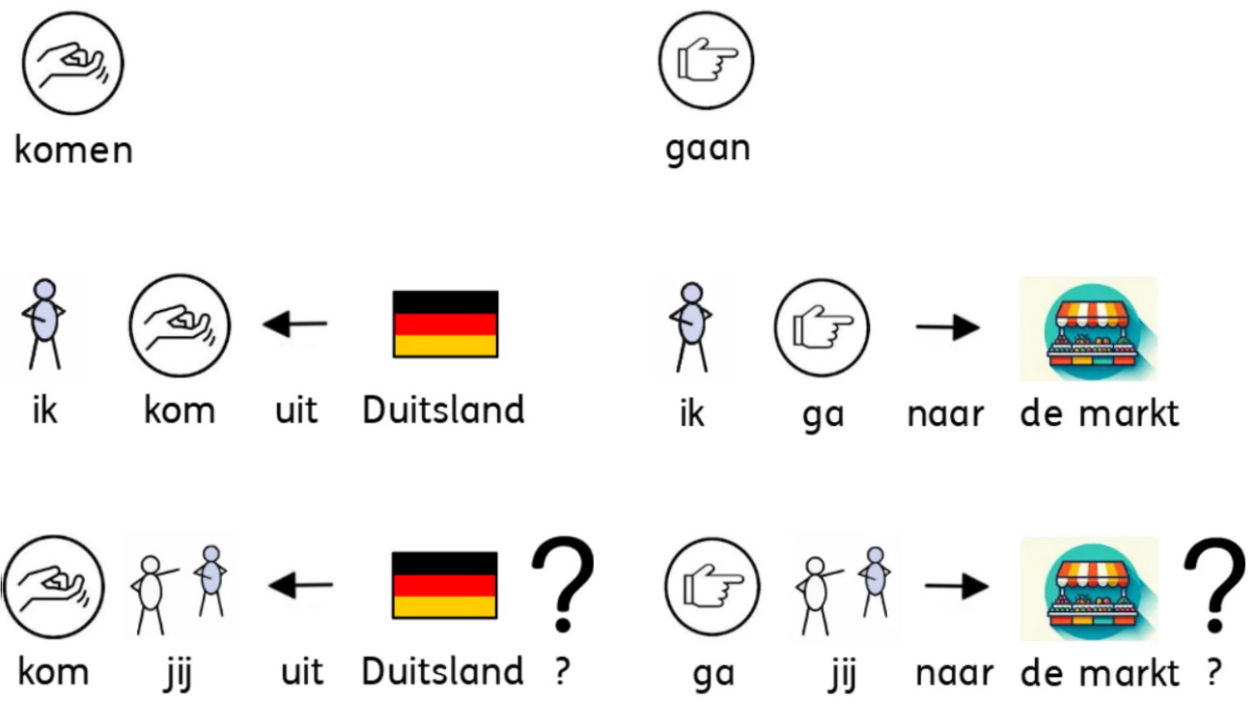
Verbs

We start again with the illustration where the sentence "I see 1 red cat" is written in 4 different languages. This illustration language immediately tells you something about word order and also whether, for example, a verb (see) is combined with a word like I, as in Turkish. It is also clear that with this sentence, word order in Dutch is similar to word order in English. If you only see words in another language, you will completely miss this connection! This illustration also shows how very simple sentences are constructed. The sentence "I see 1 red cat" (Dutch: "Ik zie 1rode kat") starts with a personal pronoun (I) that is immediately followed by a verb (to see). In the first chapters of this course, we have used our special illustration language many times. Just for simplicity. Now we will repeat some very simple examples.

Together with this illustration we offer some flashcard series. Again they demonstrate how easy our illustration language is.
Our first series shows simple sentences with the verbs to want and to have.
series 1: to want, to have
The next series shows the illustration language with the verbs to eat ad to drink:
series: to eat to eat2
series: to drink

Image Description
The verb to go is illustrated by I hand pointing forwards. The verb to go is used, as in English as a verb to indicate that you are going from one place to another, for instance "I go to Amsterdam".
It is also used to to indicate the start of an activity: I go to study (Dutch: ik ga studeren).
This web page was made with Mobirise website themes